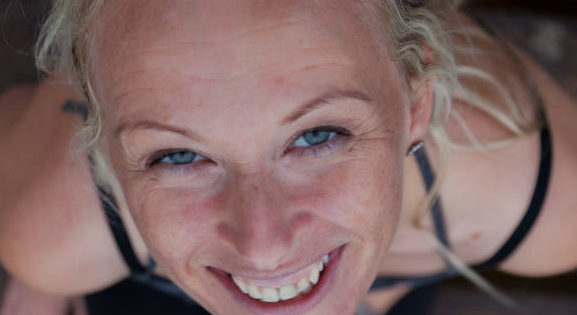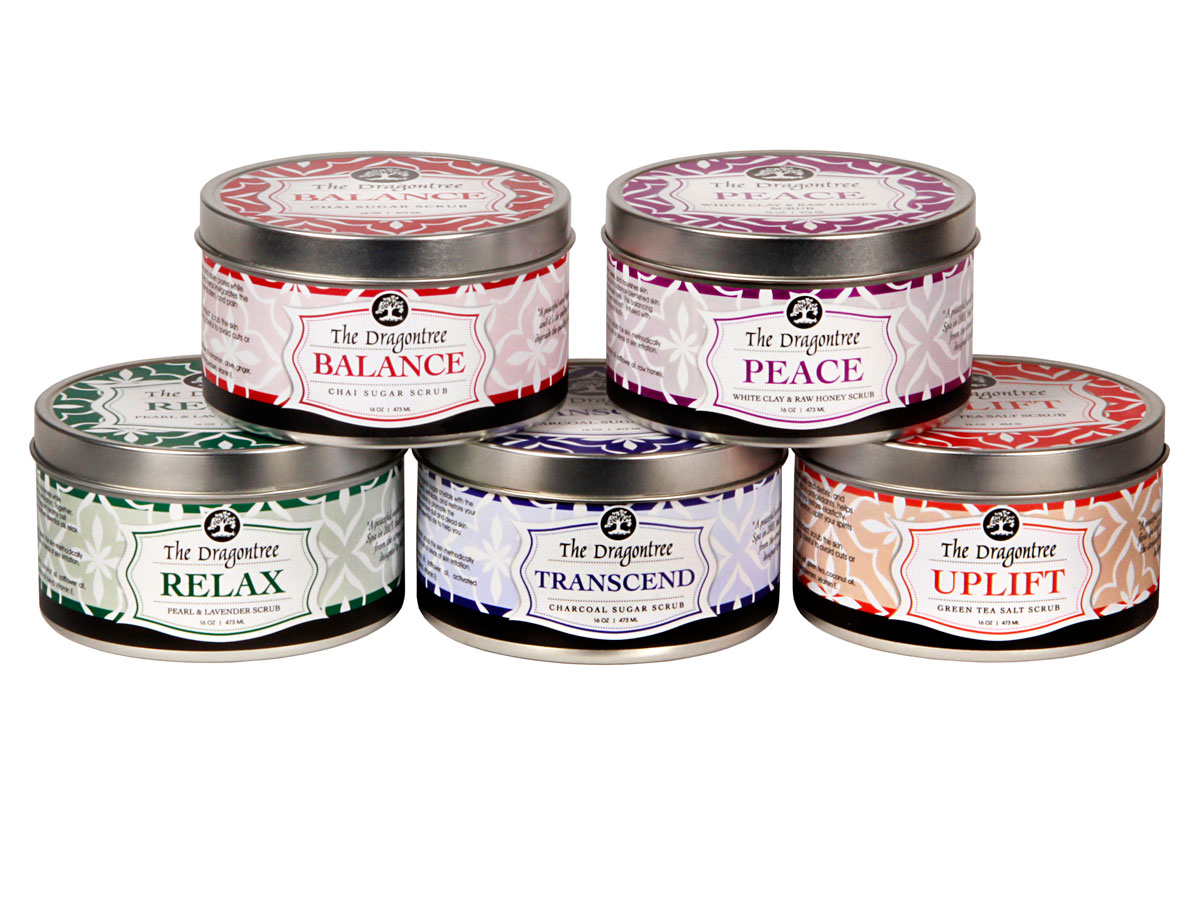WP_Query Object
(
[query] => Array
(
[category__in] => Array
(
[0] => 21
[1] => 1
)
[post__not_in] => Array
(
[0] => 2336
)
[posts_per_page] => 50
[ignore_sticky_posts] => 1
[orderby] => desc
[_shuffle_and_pick] => 3
)
[query_vars] => Array
(
[category__in] => Array
(
[0] => 21
[1] => 1
)
[post__not_in] => Array
(
[0] => 2336
)
[posts_per_page] => 50
[ignore_sticky_posts] => 1
[orderby] => desc
[_shuffle_and_pick] => 3
[error] =>
[m] =>
[p] => 0
[post_parent] =>
[subpost] =>
[subpost_id] =>
[attachment] =>
[attachment_id] => 0
[name] =>
[pagename] =>
[page_id] => 0
[second] =>
[minute] =>
[hour] =>
[day] => 0
[monthnum] => 0
[year] => 0
[w] => 0
[category_name] => skincare
[tag] =>
[cat] => 21
[tag_id] =>
[author] =>
[author_name] =>
[feed] =>
[tb] =>
[paged] => 0
[meta_key] =>
[meta_value] =>
[preview] =>
[s] =>
[sentence] =>
[title] =>
[fields] =>
[menu_order] =>
[embed] =>
[category__not_in] => Array
(
)
[category__and] => Array
(
)
[post__in] => Array
(
)
[post_name__in] => Array
(
)
[tag__in] => Array
(
)
[tag__not_in] => Array
(
)
[tag__and] => Array
(
)
[tag_slug__in] => Array
(
)
[tag_slug__and] => Array
(
)
[post_parent__in] => Array
(
)
[post_parent__not_in] => Array
(
)
[author__in] => Array
(
)
[author__not_in] => Array
(
)
[search_columns] => Array
(
)
[suppress_filters] =>
[cache_results] => 1
[update_post_term_cache] => 1
[update_menu_item_cache] =>
[lazy_load_term_meta] => 1
[update_post_meta_cache] => 1
[post_type] =>
[nopaging] =>
[comments_per_page] => 50
[no_found_rows] =>
[order] => DESC
)
[tax_query] => WP_Tax_Query Object
(
[queries] => Array
(
[0] => Array
(
[taxonomy] => category
[terms] => Array
(
[0] => 21
[1] => 1
)
[field] => term_id
[operator] => IN
[include_children] =>
)
)
[relation] => AND
[table_aliases:protected] => Array
(
[0] => wp_term_relationships
)
[queried_terms] => Array
(
[category] => Array
(
[terms] => Array
(
[0] => 21
[1] => 1
)
[field] => term_id
)
)
[primary_table] => wp_posts
[primary_id_column] => ID
)
[meta_query] => WP_Meta_Query Object
(
[queries] => Array
(
)
[relation] =>
[meta_table] =>
[meta_id_column] =>
[primary_table] =>
[primary_id_column] =>
[table_aliases:protected] => Array
(
)
[clauses:protected] => Array
(
)
[has_or_relation:protected] =>
)
[date_query] =>
[request] =>
SELECT SQL_CALC_FOUND_ROWS wp_posts.ID
FROM wp_posts LEFT JOIN wp_term_relationships ON (wp_posts.ID = wp_term_relationships.object_id)
WHERE 1=1 AND wp_posts.ID NOT IN (2336) AND (
wp_term_relationships.term_taxonomy_id IN (1,21)
) AND ((wp_posts.post_type = 'post' AND (wp_posts.post_status = 'publish' OR wp_posts.post_status = 'acf-disabled')))
AND ID NOT IN
(SELECT `post_id` FROM wp_postmeta
WHERE `meta_key` = '_pilotpress_level'
AND `meta_value` IN ('','employee')
AND `post_id` NOT IN
(SELECT `post_id` FROM wp_postmeta
WHERE `meta_key` = '_pilotpress_level'
AND `meta_value` IN ('' )))
GROUP BY wp_posts.ID
ORDER BY wp_posts.post_date DESC
LIMIT 0, 50
[posts] => Array
(
[0] => WP_Post Object
(
[ID] => 8966
[post_author] => 5
[post_date] => 2023-03-02 22:49:03
[post_date_gmt] => 2023-03-02 22:49:03
[post_content] =>
Seven years ago, Briana and I started working on a book for people who are ready to transform their lives. It’s called Rituals for Transformation. It features 108 lessons to be done over 108 days, and it takes the reader on a journey of healing and awakening. Of all our courses and books, it’s the thing I’m most proud of. I can go through the book myself, year after year, and get something new out of it each time.
Today I’d like to share lesson number 83: Every hardship is an opportunity to let go. The following is excerpted from the book.
What parts of life are hard for you? Take a look at your hardship today, and ask yourself these questions. First, what’s wrong with hard? We understand that you may prefer easy, but is it possible to see hard as just hard, and not wrong? Like a workout should be. Like a day of farm work. Hard, but manageable.
Second, what is my role in the perception of this situation as hard? While there are certain circumstances that nearly anyone would perceive as objectively hard – like carrying boulders – others are only subjectively hard because of your personal viewpoint. Hardship is a state of mind that can be difficult to relinquish. Perhaps you were taught that hard work is noble, or that it’s the only way to achieve anything, or that easy equals lazy. Such notions could lead you to believe you get extra credit for leading a hard life.
Third, could I let go of my feelings about this situation? Hold a hard situation in mind and feel what comes up in your body. Feel willingly. Invite the feeling. Welcome it. Breathe into it. And let it go.
Fourth, what’s possible when I let go? What’s beneath that hardship? When you view your hardship as an opportunity to let go, a tremendous array of additional opportunities arise. Thus, every hardship becomes an opportunity…
… to wake up
… to forgive
… to practice changing perspective
… to find new ways to play
… to put what you’ve been learning to the test
… to practice flexibility
… to reunite with a fragmented part of yourself
… to level up
… to reaffirm your values
… to practice going with the flow
… to discover your needs
… to use your gifts
… to connect to Spirit
… to grow
… to own your power
… to access intuition
… to live your purpose
… to ask for help
… to open your heart
… to relinquish control
… to be supported
… to choose lightness
… to experience trust
… to love yourself
… and to become who you really are.
Holding this hardship in mind, scan that list, and see if one of these many opportunities jumps out at you. Make a choice to change your story. Now, what’s one thing you can do right now to move yourself in the direction of this choice?
Be well,
Peter
[post_title] => Every hardship is an opportunity to let go
[post_excerpt] =>
[post_status] => publish
[comment_status] => open
[ping_status] => open
[post_password] =>
[post_name] => every-hardship-is-an-opportunity-to-let-go
[to_ping] =>
[pinged] =>
[post_modified] => 2023-03-02 22:49:03
[post_modified_gmt] => 2023-03-02 22:49:03
[post_content_filtered] =>
[post_parent] => 0
[guid] => https://thedragontree.com/?p=8966
[menu_order] => 0
[post_type] => post
[post_mime_type] =>
[comment_count] => 0
[filter] => raw
[webinar_id] => 0
)
[1] => WP_Post Object
(
[ID] => 5380
[post_author] => 3
[post_date] => 2015-07-27 20:08:10
[post_date_gmt] => 2015-07-28 03:08:10
[post_content] => I have written so much about what and how to eat, so I thought I’d say a few words about what we might do before and after a meal to enhance the experience.
First, the before-meals recommendations:
1) Set an intention. This applies to food, medicine, and supplements, though I think it especially makes sense for medicine and supplements because you had a specific outcome in mind when you bought them.
I believe there’s some value in stating to yourself what you want to happen whenever you put something into your body. Even if you’re doubtful about your ability to influence your body’s inner workings, perhaps you’ll find it worthwhile to just get clear for a moment on why exactly you’re swallowing something. But if we consider how powerful the placebo effect is – it’s not a matter of being fooled into believing we feel better, but a very real ability to cause our bodies and minds to change – isn’t this worth taking full advantage of?
When I say “set an intention,” I don’t mean you have to have an elaborate ritual (although if you want to light a candle and take your time with it, that’s great). I really just mean taking about 10 to 30 seconds to close your eyes, recognize that you’re about to introduce a new influence into your system, state clearly what you intend to get out of it, and feel grateful.
What do you want this new influence to do? Please you with its flavor, texture, and a satisfying feeling in your stomach? Make you feel grounded? Give you energy? Nourish you in the deepest places? Calm your mind? Repair something that is out of balance? Help you feel connected to the world? Build your muscles? Expressing your choice may make a difference.
2) Make sure you’re hungry. I should have said this first, but I wanted to make sure you saw the part about intention. It should be at least two hours since you last ate, and in my opinion, it’s best to avoid snacking between meals (though four or five small meals per day is fine). If it has been several hours since you last ate and you know you should be hungry, but you have a poor appetite, you can try taking some bitters before the meal, such as 15 drops of gentian tincture in a little water. Others prefer blends of bitters with aromatic herbs, such as citrus peel, cardamom, and ginger. Luckily, there is a wide selection of great bitters these days.
3) Make sure you’re not starving. If you skipped breakfast and now it’s lunch time, it’s quite possible that you’re going to eat faster than your body would like and more than your body would like. If meal skipping is a common thing for you, it’s also possible that your metabolism has slowed down, and it will be easy to eat more than your body can readily burn. I recommend not going more than about four hours between meals. If you’re already starving, of course you need to eat, but try doing it slowly. Next time, eat sooner.
4) Let everything go. Stop moving, sit down, and to the best of your ability, set aside anything you’re worrying about. Now it’s time to feed yourself and that deserves your full attention and enjoyment.
After you eat:
1) Set an intention again. You can spare 10 seconds to do this. You just filled yourself up and maybe forgot about that starting intention until now. So, once again, consider what you would like to happen with what you just consumed and state it clearly to yourself. For example: “Thank you for this meal. I intend that all the nutrients will be well absorbed and will go exactly where they’re needed in my body.” Or, “I’m grateful for this meal and intend to be thoroughly nourished and energized by it.”
Once, when I was doing a lot of qigong, I went out to eat with a friend. After finishing my food, while continuing to converse with her, I imagined I was sucking all the energy from the food through my digestive tract into all my cells. It was something I was practicing at the time, it only took a minute, and I thought I wasn’t giving any outward appearance of doing anything. But my friend’s eyes bulged out and she yelled, “What the hell did you just do?!” I explained what I had been up to and was very curious as to what she perceived. She said she couldn’t really explain it, but that it looked like my whole body came alive (I’m assuming she meant more alive). Regardless of what it looked like to her, I was just struck by the fact that my internal visualization had an outwardly noticeable effect. So, try it!
2) Relax. If possible, don’t get right back to your work or something that stresses you out. Give your body at least a few minutes to assimilate what you just consumed.
3) Take a walk. Vigorous exercise right after eating isn’t a great idea, but a walk is fine (after a brief rest), and will assist with digestion, especially after a big meal.
Give these easy practices a try. I believe that even if your food choices aren’t always excellent, you’ll be much better off if you observe these simple acts. Let me know what happens.
Be well ,
Dr. Peter Borten
[post_title] => Seven Things to do Before and After Eating
[post_excerpt] =>
[post_status] => publish
[comment_status] => open
[ping_status] => closed
[post_password] =>
[post_name] => seven-things-to-do-before-and-after-eating
[to_ping] =>
[pinged] =>
[post_modified] => 2015-07-27 20:08:10
[post_modified_gmt] => 2015-07-28 03:08:10
[post_content_filtered] =>
[post_parent] => 0
[guid] => http://www.thedragontree.com/?p=5380
[menu_order] => 0
[post_type] => post
[post_mime_type] =>
[comment_count] => 2
[filter] => raw
[webinar_id] => 0
)
[2] => WP_Post Object
(
[ID] => 6254
[post_author] => 3
[post_date] => 2016-03-22 13:40:58
[post_date_gmt] => 2016-03-22 13:40:58
[post_content] =>
Over the last couple weeks, I’ve been posting excerpts from our upcoming book on our three-part foundation for forging a successful and balanced life: structure, sweetness, and space. First, I explained how sweetness can be scheduled liberally into our lives, and how we can infuse it into otherwise mundane tasks and settings to elevate them – and ourselves. Next, I explained how structure is vital in healthy change and accomplishment, and it’s the means by which sweetness becomes integrated into every day. Finally, there’s space, the hardest thing for people to recognize and value, and the most essential for the fullest awakening of a human soul.
Space is the crucible in which sweetness and structure interact to yield a life that feels inspired, meaningful, and fun. Space is where we connect to Spirit. Space is where we find ourselves. In space we can come to understand our shadow and learn the depths of our potential. Space is where we listen – not to our media, our voice, or our own thoughts, but to the silence that holds it all, to the Truth that’s tapping on the window of our consciousness. Alignment and healing can’t occur without the openness that space provides. Insight and creativity are possible only with space. Sweetness needs space in order to be rooted in authenticity and to penetrate, engage, and feed the deepest parts of ourselves. Structure needs space for perspective; it doesn’t breathe without space.
Many traditions have a term equating to space – as the “emptiness” from which everything is born. In Daoism, it is called Wuji, the limitless, boundless, or most literally, the non-polar. That is, it’s where our expanded consciousness resides, which isn’t polarized, doesn’t need to take a position, and is simply open. In Buddhism, it is Sunyata – emptiness, openness, or spaciousness – the space in which the soul is unconfined by the mind. In Ayurveda, it is Akasha – space or ether – the origin and essence of the entire material world.
A related term in ancient Chinese philosophy is Tian, meaning heavens or sky. In Daoist cosmology, there are three realms of existence – the heavenly realm above us (tian), the earthly realm below us (di), and the human realm between, where we blend the qualities of heavens and earth and live in the dynamic swirl between these poles. The heavenly realm is considered to be the domain of pure Yang – the creative force and the intangible spiritual origin of everything. And the earthly realm is considered the domain of pure Yin – of substance and form. The ancient glyph for earth was three stacked broken horizontal lines:
 As you can see, the breaks in the three lines form a sort of vertical trough in the middle. The quintessential character of the earthly realm is receptive, and this opening in the earth indicates that it’s a vessel – a vessel to receive and hold the spiritual qualities of the heavenly realm. This is how “heaven on earth” occurs – by our making space in ourselves, to be vessels for the truth of our vast undifferentiated awareness.
When we make space in our consciousness, there’s a place for answers and intuition to come in. I’ve attempted to conceptualize this in the diagram below:
As you can see, the breaks in the three lines form a sort of vertical trough in the middle. The quintessential character of the earthly realm is receptive, and this opening in the earth indicates that it’s a vessel – a vessel to receive and hold the spiritual qualities of the heavenly realm. This is how “heaven on earth” occurs – by our making space in ourselves, to be vessels for the truth of our vast undifferentiated awareness.
When we make space in our consciousness, there’s a place for answers and intuition to come in. I’ve attempted to conceptualize this in the diagram below:
 Besides the expansion that space enables in us, there’s another great reason to make space a priority: it’s the antithesis and solution to our addiction to the data stream that dominates our lives and attaches us to our devices. All the time we spend plugged in to the massive flow of information and ideas, we’re disconnected from the magic of the natural world around us. Even though we know in our hearts that there’s nothing more precious than the space in which we discover what we’re connected to, we’ve made some pretty deep agreements with our mind to let it run the show, and that means working hard to fill every possible bit of space. Minds don’t like space.
So, this week, I encourage you to strike a compromise with your mind. Ask it to take a break for a while, and promise it that you’ll give it some really juicy reading or a Sudoku later. Then go be. And say hi to space for me.
With love,
Dr. Peter Borten
Besides the expansion that space enables in us, there’s another great reason to make space a priority: it’s the antithesis and solution to our addiction to the data stream that dominates our lives and attaches us to our devices. All the time we spend plugged in to the massive flow of information and ideas, we’re disconnected from the magic of the natural world around us. Even though we know in our hearts that there’s nothing more precious than the space in which we discover what we’re connected to, we’ve made some pretty deep agreements with our mind to let it run the show, and that means working hard to fill every possible bit of space. Minds don’t like space.
So, this week, I encourage you to strike a compromise with your mind. Ask it to take a break for a while, and promise it that you’ll give it some really juicy reading or a Sudoku later. Then go be. And say hi to space for me.
With love,
Dr. Peter Borten
[post_title] => Space: The Vital Frontier
[post_excerpt] =>
[post_status] => publish
[comment_status] => open
[ping_status] => open
[post_password] =>
[post_name] => space-the-vital-frontier
[to_ping] =>
[pinged] =>
[post_modified] => 2016-03-22 16:49:35
[post_modified_gmt] => 2016-03-22 16:49:35
[post_content_filtered] =>
[post_parent] => 0
[guid] => http://www.thedragontree.com/?p=6254
[menu_order] => 0
[post_type] => post
[post_mime_type] =>
[comment_count] => 0
[filter] => raw
[webinar_id] => 0
)
)
[post_count] => 3
[current_post] => -1
[before_loop] => 1
[in_the_loop] =>
[post] => WP_Post Object
(
[ID] => 8966
[post_author] => 5
[post_date] => 2023-03-02 22:49:03
[post_date_gmt] => 2023-03-02 22:49:03
[post_content] =>
Seven years ago, Briana and I started working on a book for people who are ready to transform their lives. It’s called Rituals for Transformation. It features 108 lessons to be done over 108 days, and it takes the reader on a journey of healing and awakening. Of all our courses and books, it’s the thing I’m most proud of. I can go through the book myself, year after year, and get something new out of it each time.
Today I’d like to share lesson number 83: Every hardship is an opportunity to let go. The following is excerpted from the book.
What parts of life are hard for you? Take a look at your hardship today, and ask yourself these questions. First, what’s wrong with hard? We understand that you may prefer easy, but is it possible to see hard as just hard, and not wrong? Like a workout should be. Like a day of farm work. Hard, but manageable.
Second, what is my role in the perception of this situation as hard? While there are certain circumstances that nearly anyone would perceive as objectively hard – like carrying boulders – others are only subjectively hard because of your personal viewpoint. Hardship is a state of mind that can be difficult to relinquish. Perhaps you were taught that hard work is noble, or that it’s the only way to achieve anything, or that easy equals lazy. Such notions could lead you to believe you get extra credit for leading a hard life.
Third, could I let go of my feelings about this situation? Hold a hard situation in mind and feel what comes up in your body. Feel willingly. Invite the feeling. Welcome it. Breathe into it. And let it go.
Fourth, what’s possible when I let go? What’s beneath that hardship? When you view your hardship as an opportunity to let go, a tremendous array of additional opportunities arise. Thus, every hardship becomes an opportunity…
… to wake up
… to forgive
… to practice changing perspective
… to find new ways to play
… to put what you’ve been learning to the test
… to practice flexibility
… to reunite with a fragmented part of yourself
… to level up
… to reaffirm your values
… to practice going with the flow
… to discover your needs
… to use your gifts
… to connect to Spirit
… to grow
… to own your power
… to access intuition
… to live your purpose
… to ask for help
… to open your heart
… to relinquish control
… to be supported
… to choose lightness
… to experience trust
… to love yourself
… and to become who you really are.
Holding this hardship in mind, scan that list, and see if one of these many opportunities jumps out at you. Make a choice to change your story. Now, what’s one thing you can do right now to move yourself in the direction of this choice?
Be well,
Peter
[post_title] => Every hardship is an opportunity to let go
[post_excerpt] =>
[post_status] => publish
[comment_status] => open
[ping_status] => open
[post_password] =>
[post_name] => every-hardship-is-an-opportunity-to-let-go
[to_ping] =>
[pinged] =>
[post_modified] => 2023-03-02 22:49:03
[post_modified_gmt] => 2023-03-02 22:49:03
[post_content_filtered] =>
[post_parent] => 0
[guid] => https://thedragontree.com/?p=8966
[menu_order] => 0
[post_type] => post
[post_mime_type] =>
[comment_count] => 0
[filter] => raw
[webinar_id] => 0
)
[comment_count] => 0
[current_comment] => -1
[found_posts] => 243
[max_num_pages] => 5
[max_num_comment_pages] => 0
[is_single] =>
[is_preview] =>
[is_page] =>
[is_archive] => 1
[is_date] =>
[is_year] =>
[is_month] =>
[is_day] =>
[is_time] =>
[is_author] =>
[is_category] => 1
[is_tag] =>
[is_tax] =>
[is_search] =>
[is_feed] =>
[is_comment_feed] =>
[is_trackback] =>
[is_home] =>
[is_privacy_policy] =>
[is_404] =>
[is_embed] =>
[is_paged] =>
[is_admin] =>
[is_attachment] =>
[is_singular] =>
[is_robots] =>
[is_favicon] =>
[is_posts_page] =>
[is_post_type_archive] =>
[query_vars_hash:WP_Query:private] => af5f8929ae9b5801854b837c81c8d570
[query_vars_changed:WP_Query:private] =>
[thumbnails_cached] =>
[allow_query_attachment_by_filename:protected] =>
[stopwords:WP_Query:private] =>
[compat_fields:WP_Query:private] => Array
(
[0] => query_vars_hash
[1] => query_vars_changed
)
[compat_methods:WP_Query:private] => Array
(
[0] => init_query_flags
[1] => parse_tax_query
)
)



 Cart
Cart




